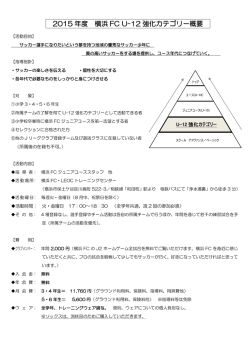
見る/開く - JAIST学術研究成果リポジトリ
JAIST Repository https://dspace.jaist.ac.jp/ Title ポリプロピレン修飾ナノシリカによるナノコンポジッ トの特性改良 Author(s) 豊永, 匡仁 Citation Issue Date 2014-09 Type Thesis or Dissertation Text version none URL http://hdl.handle.net/10119/12303 Rights Description Supervisor:寺野 稔, マテリアルサイエンス研究科, 博士 Japan Advanced Institute of Science and Technology 氏 名 豊 永 匡 仁 学 位 の 種 類 博士(マテリアルサイエンス) 学 位 記 号 博材第 354 号 番 学 位 授 与 年 月 日 平成 26 年 9 月 24 日 論 Characteristic Improvements of Nanocomposites using Polypropylene-granfted Nanosilica (ポリプロピレン修飾ナノシリカ によるナノコンポジットの特性改良) 文 題 目 論 文 審 査 委 員 主査 寺野 稔 北陸先端科学技術大学院大学 教授 松村 和明 同 准教授 谷池 俊明 同 准教授 金子 達雄 同 准教授 中谷 久之 北見工業大学 教授 論文の内容の要旨 It is an important issue for the reinforcement of polymer nanocomposites to strengthen the interfacial connection between the matrix and filler. Annual production of polypropylene (PP) has exceeded 60 million tons in the world because of its versatile properties and wide range of applications, which was characterized by a number of advantages such as low cost, light weight (0.90 g/cm3), high melting temperature (165C, compared with other polyolefins), good processability, balanced mechanical properties, low environmental load (only carbon and hydrogen atoms) and so on. PP-based nanocomposites have attracted great attention in order to further expand its versatility and to explore a new specialty. However, PP-based nanocomposites is extremely challenging owing to the extreme inertness of PP against inorganic nanoparticles, in contrast to other polymers containing polar functional groups. Moreover, nanoparticles do not disperse well in PP but make large and compact aggregates, which result in marginal reinforcement as well as other problems like embrittlement, enhanced degradation, and so on. In order to overcome the compatibility problem, a variety of strategies have been proposed. In particular, Polymer-grafting method is a potentially versatile and scalable approach due to the direct applicability to the conventional melt mixing process, which aims at not only improved dispersion through organic modification and steric prevention of filler agglomeration but also better interfacial connection through interdiffusion and entanglement between grafted and matrix polymer chains. The select of grafted PP chain is the most excellent means for matrix. PP chain-grafted nanosilica (PP-g-SiO2) can form a physical cross-linkage structure made by co-crystallization between the matrix and grafted chains, where SiO2 nanoparticles bridge neighboring lamellae through the grafted chains (Figure 1). However, the effect of the physical cross-linkage is not investigated in detail. Hence, the purpose of this study clarifies influences of the physical cross-linkage on mechanical properties of PP/PP-g-SiO2 nanocomposites. Effects of physical cross-linkage on the tensile properties of PP-based nanocomposites were estimated using PP-g-SiO2 having different molecular weights, grafted PP amounts and filler contents. PP-g-SiO2 was synthesized by propylene polymerization, terminal functionalization and grafting reaction. After reaction, unhydroxylated Polymer is removed by hot filtration. Nanocomposite films were prepared by melt mixing and hot press. In dispersion state, all PP/PP-g-SiO2 nanocomposites improve the dispersion states compared with PP/SiO2 nanocomposite due to improvement of the miscibility and the block of filler aggregation by grafted PP chains. The Young’s modulus and tensile strength of PP/PP-g-SiO2 improved up to 30% compared with pristine PP by physical cross-linkage. The dependence on the graft amount was totally different between the Young’s modulus and tensile strength. It was suggested that the dispersion of SiO2 nanoparticles dominated the Young’s modulus. Tensile strength was improved by grafted amount rather than number of particles. As a consequence, I consider that characteristic improvements of PP-based nanocomposites are successes. Figure 1. Structure of physical cross-linkage Key Words: Polypropylene, Nanocomposite, Grafting reaction, Mechanical properties, Physical cross-linkage 論文審査の結果の要旨 ポリマーに無機ナノ粒子などのフィラーを充填させたポリマーナノコンポジットは力学的 性質や機能性を大幅に強化することが可能である。特にポリプロピレン(PP)は低コスト でありながら優れた力学的性質と機能性を有する汎用性樹脂であり、ナノコンポジット化 に基づく使用領域の拡張はリユース・リサイクルの観点から非常に意義深い。しかし、化 学的に不活性な PP のフィラーに対する相容性は著しく悪く、そのため PP/フィラー界面の 脆化や、フィラー同士の凝集によってナノコンポジット本来の特性が発揮できない。この 問題に対して相溶化剤や表面改質剤の利用が一般的に行なわれている。いままで十分な補 強効果は得られていない。そこで、十分な補強効果を得るには相容性の改善と PP/フィラー 界面の接合性を同時に改善することが重要であると考えた。本研究では界面接合性を向上 させるために、フィラーであるナノシリカ(SiO2)にマトリックスと同じ構造を有するグ ラフト PP 鎖を修飾(PP-g-SiO2)し、これを PP と共結晶化させることで物理的な架橋構 造を作り出す新規 PP 系ナノコンポジットの調製方法を見出した。よって本論文の目的は PP-g-SiO2 の構造を制御し、マトリックス/フィラー界面を作りこむことで PP 系ナノコンポ ジットの特性改良を達成することである。 PP-g-SiO2 の構造制御を PP 鎖の長さや SiO2 表面への修飾量によって行なった。鎖長の 制御はグラフト PP 鎖である片末端変性 PP(PP-t-OH)を合成する際のプロピレン重合時 に用いた連鎖移動剤の濃度を調節することで達成した。また修飾量の制御はグラフト反応 時に用いた PP-t-OH の導入量を調節することによって可能となった。マトリックス PP と PP-g-SiO2 の溶融混練によって調製したナノコンポジット(PP/PP-g-SiO2)は PP や PP/SiO2 よりも相容性およびフィラーの分散性が著しく改善した。示差走査熱量分析機を用いた結 晶特性の評価において、PP/PP-g-SiO2 の結晶化速度は融点および結晶化度を変化させない まま PP や PP/SiO2 よりも最大で約 400%向上させることに成功した。この結晶化速度の向 上はグラフト本数に強く依存し、本数の増加に従って向上した。引張試験による力学的性 質の評価においては、グラフト鎖長だけでなくグラフト本数を増加させることで PP や PP/SiO2 よりもヤング率および引張強度が最大で約 30%向上した。溶融粘弾性試験におい て、PP/PP-g-SiO2 の溶融物性は PP と同等の値を示したため、PP/PP-g-SiO2 の補強効果機 構がフィラーそのものよりも、ラメラ間の架橋によるものであることを明確に示した。 以上より、本論文は PP 系ナノコンポジットの特性改良について検討し、実用的そして 十分な結果を達成したものであり、学術的かつ工業的に貢献できるものと考えられる。よ って博士(マテリアルサイエンス)の学位論文として十分価値あるものと認めた。
© Copyright 2026
